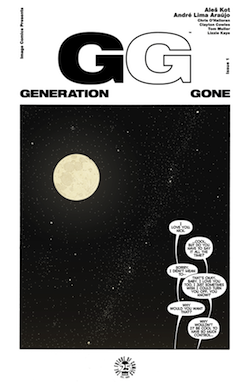Thursday Comics Hangover: Say something nice
A considerable portion of Seattle’s comic book talent is in San Diego this week at the corporate pop cultural orgy known as San Diego Comic Con. It makes sense to take stock of comic culture at this time of year, because it’s the closest thing to a High Holy Days in the nerd calendar year. Look anywhere on the internet right now and you’ll probably find an equal share of breathless odes to SDCC and vicious takedowns of everything having to do with the crass commercialism of nerd culture.
The thing is, I do enough whining about corporate comics in this space. And so for Comic Con, I thought I’d point out seven comics series that I’m genuinely excited to read every month. Prepare for niceness:
Ms. Marvel is the best comic that Marvel publishes. It’s consistently great — a deeply personal celebration of the superhero myth.
Paper Girls from Brian K. Vaughan and Cliff Chiang evokes a wide array of sci-fi source material — Stranger Things, Lost, Steven Spielberg and Stephen King — while still feeling completely original. It’s a time travel comic that has seemingly been planned down to the last detail, an adventure comic that places character at the forefront of the story, and a touching story about growing old while combating nostalgia.
Giant Days is a perfect sitcom of a book, about a group of young women trying to navigate the adult world. It’s funny, but not in a way that sacrifices the dignity of its characters. It’s sweet, but not cloyingly so. Giant Days is about as likable as a comic can be.
The Black Monday Murders imagines a world where money is power. Okay, but like magical power. It’s a murder mystery set in a world where America's wealthiest families have amassed dark magic along with their wealth, creating a metaphor for income inequality that is perhaps more vivid than any I’ve ever read.
The new comic by underrated novelist Victor LaValle, Destroyer, is a fresh take on the Frankenstein story that addresses race and police violence in a meaningful way. It’s the second-newest comic on the list, but it looks to be a work that will add to LaValle’s shelf full of novels that use genre to investigate the black experience in America.
I just wrote about the first issue of Calexit last week, but I’ve thought a lot about this book in the past seven days. It’s not often that a single issue of a comic lives in my head like this.
Kill or Be Killed is the closest thing to Taxi Driver I’ve read in comics form. It takes vigilante justice to its logical conclusion in a story narrated by a damaged man who murders people he believes to be criminals.

And here’s a bonus comic: yesterday I picked up the first issue of Generation Gone, an Image series written by Ales Kot and illustrated by André Lima Araújo. It’s very promising. The story is about three young hackers who are preparing to steal an obscene amount of money from an obscene too-big-to-fail bank. The class struggle is real: “These children are millennials,” someone exclaims in the middle of the issue. “Men like you have taken their future away from them. They are getting ready to steal it back.”
Araújo draws a diverse cast with expressive faces and he lays out the action through a wide variety of perspectives. It’s a kind of realism that draws you in and lulls you into complacency. Just when you think this is a book about normal people in normal rooms doing fairly straightforward computer-y things, the twist kicks in and you understand that Araújo has a wider range than you first expected: he’s a rare horror artist whose work is genuinely scary.
This first issue of Generation Gone is all set-up. It’ll make for a compelling first chapter in the inevitable collected volume, but readers of the first issue might be annoyed that just when the book gets started, it ends. Still, if you give it a chance you'll find a well-written and superbly illustrated high-concept first issue of a series — one that could well wind up on your list of favorite monthly comics.